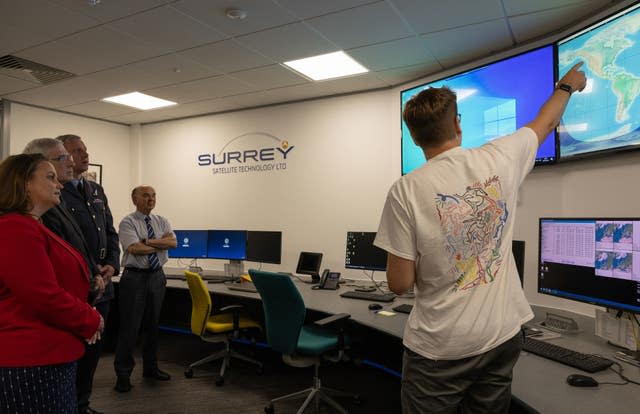- 0 replies
- 980 views
- Add Reply
- 0 replies
- 1,449 views
- Add Reply
- 0 replies
- 654 views
- Add Reply
- 0 replies
- 800 views
- Add Reply
- 0 replies
- 1,235 views
- Add Reply
Mathematicians debunk GPS assumptions to offer improvements

By Lurker,


The summer holidays are ending, which for many concludes with a long drive home and reliance on GPS devices to get safely home. But every now and then, GPS devices can suggest strange directions or get briefly confused about your location. But until now, no one knew for sure when the satellites were in a good enough position for the GPS system to give reliable direction.
TU/e's Mireille Boutin and her co-worker Gregor Kemper at the Technical University of Munich have turned to mathematics t
At least 30 dead after dam collapse disaster in Sudan

By Lurker,


At least 30 people have been killed following the collapse of a dam in Sudan's northwest Red Sea State, according to the United Nations's emergency relief agency. Hundreds more are believed missing, Reuters reported.
Flash flooding decimated 20 villages and damaged a further 50 after the Arba'at Dam collapsed Sunday, the United Nations Office for the Coordination of Humanitarian Affairs (OCHA) said. It estimated 50,000 people had been "severely affected" by the disaster.
In the villages of K
UAE among top 20 countries operating SAR satellites with launch of 'Foresight-1'

By Lurker,
Bayanat, a leading provider of AI-powered geospatial solutions and a subsidiary of G42, confirmed that the launch of the Synthetic Aperture Radar (SAR) satellite, titled "Foresight-1", is a significant achievement that reinforces the UAE's global leadership in the space sector, as it is the first satellite of the UAE's Earth Observation Space Programme.
Hasan Al Hosani, Managing Director of Bayanat, told the Emirates News Agency (WAM) that Foresight-1 places the UAE among the prestigious li
Sentinel-2C in the Vega launch tower

By Lurker,


In preparation for liftoff on 4 September 2024 (3 September Kourou time), the Vega–Sentinel-2C upper-composite has been hoisted into the launch tower at Europe’s Spaceport.
The Sentinel-2 mission is based on a constellation of two identical satellites, Sentinel-2A (launched in 2015) and Sentinel-2B (launched in 2017), flying in the same orbit but 180° apart to optimise coverage and revisit time.
Each satellite carries a high-resolution multispectral imager to deliver optical images fro
Images from UK military’s first satellite will be shared with allies

By Lurker,


Images gathered by the UK military’s first satellite will be shared with allies, the Ministry of Defence (MoD) has said.
The department said the war in Ukraine had shown that the use of space is “crucial” to military operations.
The satellite, named Tyche, was launched on Friday from a rocket owned by SpaceX, the company co-founded by technology entrepreneur and billionaire Elon Musk.
Along with military information, it is intended that data from the satellite will be accessible b
-
Forum Statistics
8.8k
Total Topics43.5k
Total Posts




